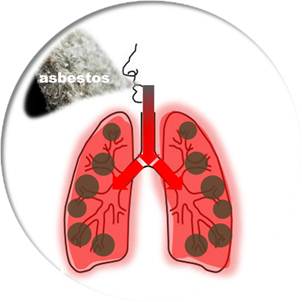How does asbestos kill people?
 If you are young = greater danger
If you are young = greater danger
For building use, asbestos is usually mixed with another material, for example, board, insulation or coatings, which often look similar to other materials. In addition, asbestos-containing materials are often covered or placed behind other building materials, so it's hard to know if you're working with it or not. But, if you work in a building built before the year 2000, it's likely that some parts of the building will contain asbestos.
Generally, asbestos is only a risk if it is disturbed or damaged so that fibres are released into the air where they can be breathed in.
Unlike other minerals, asbestos doesn't grind into small grains - it breaks down into tiny fibres. These fibres are smaller than hair, and can only be seen under a microscope. When someone breathes in asbestos fibres, some of them become lodged in delicate lung tissue. The body's immune system tries to break the fibres down, but asbestos is resilient and only breaks down extremely slowly.
Over time, if exposure to asbestos is repeated, fibres build up and can damage the lung tissue and lining. Damage can continue to develop for many years - even if there is no further exposure to asbestos. Eventually, the lungs can be very badly harmed due to asbestos-related diseases, such as mesothelioma, lung cancer, asbestosis and diffuse pleural thickening. You don't need to remember the names of these illnesses. Just remember that they are all horrible, and some of these conditions will kill.
All exposure to asbestos should be avoided. However, that does not mean you should worry about a single one-off exposure, this is very unlikely to lead to disease - It is not true that one single fibre kills. A key factor in the risk of developing an asbestos-related disease is the total number of fibres breathed in. The degree of risk depends on the total lifetime cumulative exposure; the type of asbestos involved and the time elapsed since you were first exposed. Young people, if routinely exposed to asbestos over time, because of the latency, are at greater risk of developing disease than older workers. It is therefore very important you protect yourself now to prevent the possibility of contracting an asbestos-related disease in the future. It is also important to understand that people who smoke and are also exposed to asbestos fibres are at a much greater risk of developing lung cancer.